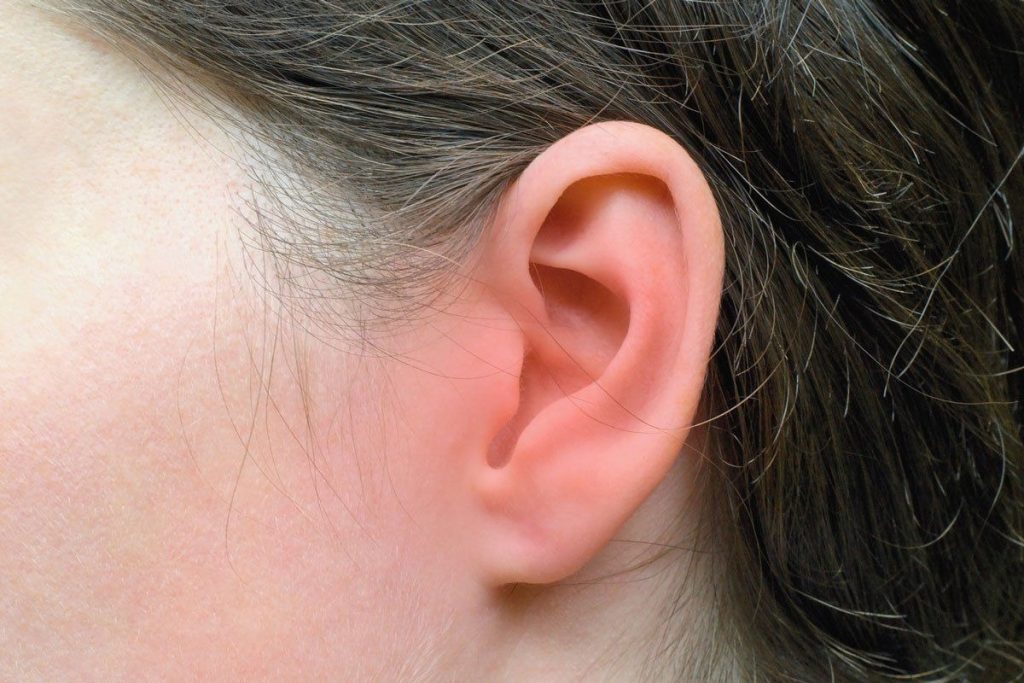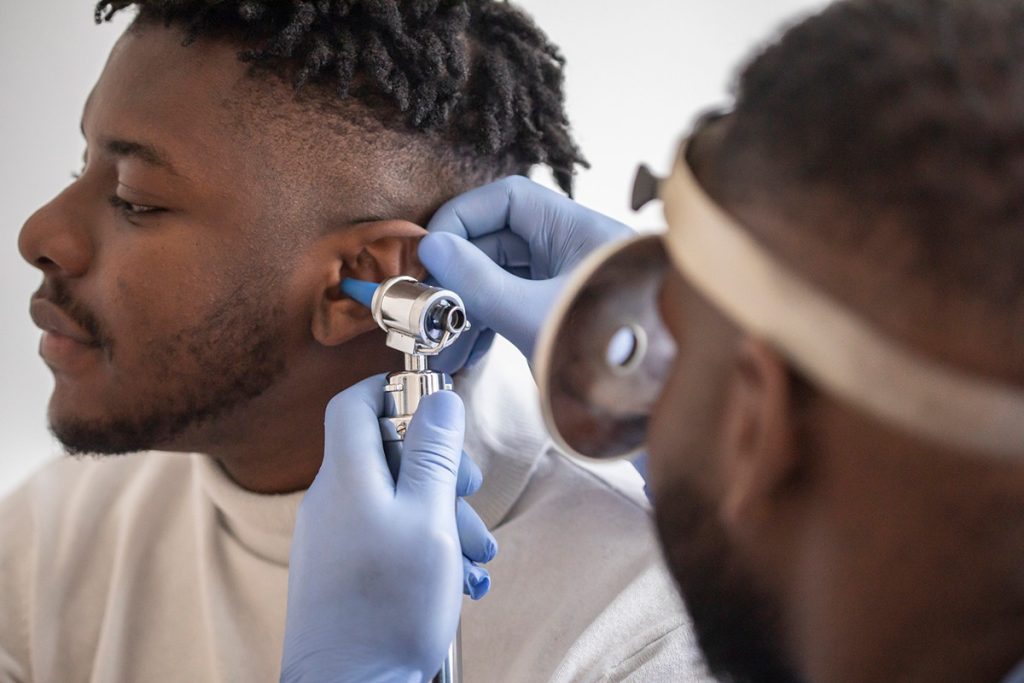
What Do Ear Infections Look Like: Key Differences Between Viral and Bacterial Causes
What do ear infections look like? It can be hard to tell, especially since viral and bacterial infections share many of the same symptoms. However, knowing the difference is crucial for proper treatment and faster recovery.
Ear infections are common, especially in children. Studies show that after a cold, over 60% of kids develop ear infections ” with 37% getting acute otitis media and 24% experiencing otitis media with effusion.
In most cases, viral infections improve on their own with rest and care. But bacterial ear infections may require antibiotics. Recognizing what ear infections look like and understanding their signs ” such as ear pain, fever, or fluid discharge ” helps in deciding the best treatment approach.
Ear infections are common in all ages, but more in children. We’ll look at why they happen, how often, and why knowing the difference between viral and bacterial infections is key.
Ear infections can hit anyone, but kids get them more often. Bacteria like Streptococcus pneumoniae and Haemophilus influenzae are big culprits in kids. Adults might get them from viruses or bacteria after a cold or flu.
Children are more prone to ear infections than adults. Their Eustachian tube is shorter and more horizontal. This makes it easier for germs to get into the middle ear.

Otitis media, or middle ear infection, often comes after a cold or flu. Respiratory infections can cause the Eustachian tube to malfunction. This leads to fluid buildup and a higher chance of infection.
Research shows otitis media is a common side effect of respiratory infections, mainly in kids. It’s vital to watch for ear infection signs after a cold or flu, mainly in young children.
Telling viral from bacterial ear infections is key for the right treatment. Viral ear infections usually get better with care, but bacterial ear infections need antibiotics to heal properly.
Getting the right diagnosis is important. It helps avoid overusing antibiotics and ensures the best treatment for each case. We’ll explore how to tell them apart in the next sections.
Ear infections show up differently in people of all ages. It’s important to know the visual signs to catch them early. This helps in getting the right treatment fast.
Looking at the outer ear can give clues about ear infections. Adults and kids might see redness, swelling, or inflammation. Sometimes, discharge or fluid is coming out.
“Ear pain is a common complaint among patients with ear infections,” doctors say. Kids might tug or rub their ears, which is a big sign, even if they can’t talk.
Doctors use an otoscope to check the eardrum. A healthy eardrum looks clear and gray. But an infected one might be red, bulging, or pulled back.
Fluid or bubbles behind the eardrum also mean infection. Otoscope results help tell if it’s a virus or bacteria. Bacterial infections usually cause more severe inflammation.
Babies and toddlers can’t say they’re in pain. So, it’s key to watch for signs like irritability, fever, or trouble sleeping. Fluid from the ear or ear tugging is also a clue.
Parents and caregivers need to watch for these signs closely. Catching ear infections early is very important for young kids, doctors say.
In short, knowing the visual signs of ear infections is key to diagnosis and treatment. Being aware helps people get medical help when needed.
It’s important to know the symptoms of viral and bacterial ear infections. This helps us decide the best treatment. Understanding the differences in symptoms guides us in making the right choice.
Fever is a common sign of ear infections. But, the type of fever can tell us a lot. High fever usually means a bacterial infection, showing it’s more serious.
Low-grade fever can happen in both types of infections. This makes it less clear what’s causing it.
For example, a child with a bacterial infection might have a fever over 102 °F. A viral infection might have a lower fever or none at all. Knowing this helps us tell the difference.

The pain from ear infections can also tell us a lot. Pain from bacterial infections is usually worse and lasts longer. It’s often sharp or stabbing. Viral infections might cause a dull, aching pain.
In kids, ear pain is very upsetting. Knowing the type of pain they have is key. For example, a child with a bacterial infection might be very upset and have trouble sleeping. A viral infection might just make them feel generally uncomfortable.
Discharge from the ear can also tell us a lot. Bacterial infections often have thick, yellow or green discharge with a bad smell. Viral infections might have clearer, watery discharge.
The type and amount of discharge can help us figure out the infection. For example, thick, yellow discharge usually means a bacterial infection. Clear discharge might mean a viral infection.
Children with ear infections often act differently. Irritability, fussiness, and trouble sleeping are common signs. These signs can show if a child has an ear infection, even if they can’t say it.
Bacterial infections can cause more noticeable changes in behavior. For example, a child with a bacterial infection might pull at their ear, be very clingy, or have trouble eating because of pain.
Knowing when an ear infection starts and how long it lasts is key. This info helps figure out what caused it. It helps us tell if it’s a viral or bacterial infection.
Ear infections often start after a cold or flu. This suggests they might be viral. Viral ear infections usually get better by themselves once the virus is gone.
If a child gets an ear infection after a cold, it’s likely viral. Watching how symptoms change helps us understand the cause.
Ear infections after strep throat are often bacterial. Bacterial infections need antibiotics to heal. For example, strep throat followed by an ear infection usually means it’s bacterial.
Some bacterial infections can cause ear infections later. Learning about ear infections in adults helps us see how bacterial illnesses affect ears.
Viral ear infections usually go away in a few days to a week. Bacterial ones can last longer without treatment. The length of the infection is a big clue for whether it’s viral or bacterial.
If an ear infection lasts over a week, it might be bacterial. It might need medical help.
Sometimes, ear infections have both viruses and bacteria. This makes diagnosing and treating them harder. Knowing the timeline and symptoms is key in these cases.
“The complexity of mixed infections highlights the importance of a thorough medical evaluation to determine the appropriate course of treatment.” – ENT Specialist
By looking at when and how long ear infections last, we can make better choices. Knowing the signs and timeline helps us figure out if it’s viral or bacterial. This guides us on how to treat it.
It’s important to know when to get medical help for ear infections. We’ll talk about when you should see a doctor for a proper diagnosis.
Some symptoms mean you need to see a doctor right away. A fever over 102.2 °F (39 °C) is a sign of a possible bacterial infection. Also, if you see pus or discharge from your ear, it could mean a perforated eardrum, which needs quick treatment.
Key warning signs include:
If your child has ear pain without a fever, watch their symptoms closely. Seek medical help if the pain gets worse or doesn’t go away.
Doctors use different ways to figure out what’s causing an ear infection. One common method is otoscopy. This is when a doctor looks at the eardrum with an otoscope to check for signs of infection or damage.
Otoscopy can reveal:
Doctors also ask questions about your symptoms. They want to know when the symptoms started, how long they’ve lasted, and how bad they are. This helps them decide if the infection is viral or bacterial.
Doctors look at several things to figure out if an ear infection is viral or bacterial. They consider how bad your symptoms are, if you have a fever, and what they see during otoscopy. Knowing the cause helps them choose the right treatment.
If you keep getting ear infections, there are special things to think about. These infections might mean there’s something else going on, like Eustachian tube problems or allergies. You need to talk to your doctor about these to stop the infections from coming back.
Talk to your healthcare provider if you or your child keeps getting ear infections. Discuss possible causes, ways to prevent them, and treatment options for recurring infections.
Understanding the difference between viral and bacterial ear infections helps in choosing the right treatment. Knowing the signs of an ear infection is key to making the best decision.
Ear infection symptoms change with age. Knowing these differences is vital for proper care. We’ve covered symptoms, causes, and timelines of ear infections. This information helps readers make informed choices about their care.
If you notice symptoms of an ear infection, see a doctor. They can find the cause and treat it. This way, you can feel better and avoid serious problems.
Signs include ear pain, fever, and irritability. Difficulty sleeping and discharge from the ear are also common. In young children, pulling at the ear is a key indicator.
It’s hard to tell just by looking. A doctor will check with an otoscope. They’ll look at the fever, pain, and discharge to decide.
Viral infections have mild symptoms. You might have a low fever and less pain. The eardrum might look red and inflamed.
Bacterial infections are more serious. You’ll have a high fever and a lot of pain. Sometimes, you’ll see discharge. A doctor can tell you for sure.
Yes, for viral infections, you might not need antibiotics. But bacterial infections might need them. Always check with a doctor.
Look out for high fever, severe pain, and discharge. If your child is very irritable or can’t sleep, get help right away.
Doctors use an otoscope to look at the eardrum. They’ll check your symptoms and might use tympanometry. This helps them figure out what’s causing the infection.
Yes, they can be. Doctors can help manage them and prevent future infections. It’s important to talk to a doctor if you keep getting them.
Viral infections usually get better in a few days to a week. Symptoms can vary, but most people start feeling better soon.
Yes, they can. This makes diagnosis and treatment harder. Doctors will assess your symptoms and choose the best treatment.
Subscribe to our e-newsletter to stay informed about the latest innovations in the world of health and exclusive offers!
WhatsApp us